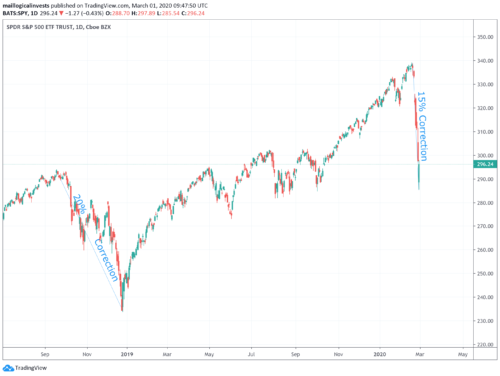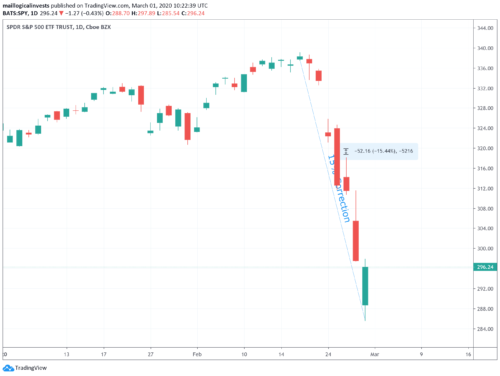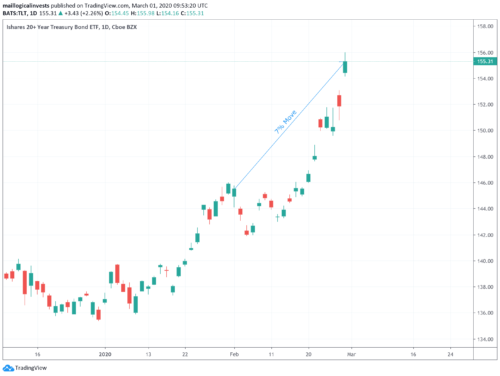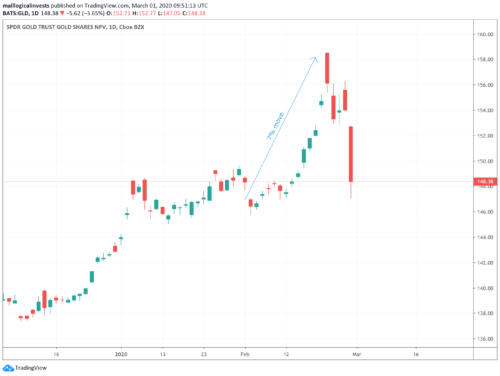The Logical-Invest Newsletter For March 2020
How did LI strategies handle the correction
Our strategies were hedged during this sudden market correction, so they held up well. All strategies outperformed the S&P 500, which is down -9.8% for the month.
As discussed in our “2020 investment strategy update” post, a correction with no warning was expected, based on the experience from the end of 2018.

SPY corrections: October 2018/February 2020
The solution implemented was upping our algorithm’s allowed allocations to safe heavens, as well as diversifying our hedge from one safe-heaven asset to two. During this correction, the assets used to hedge risk were both gold and short term treasuries (GSY).
Compared to the S&P 500, which is down -8% YTD, our Maximum Yield strategy is up +4.7%, our gold-USD strategy up +2.6%, while the Enhanced Permanent Portfolio is at -1.1%, and the Bond Rotation strategy at -1.7%, while all other strategies (with the exception of sector rotation) are down less than -4.7% year to date.
How did the hedge assets behave
Although the drop in the index was fast with the S&P 500 making large daily 3%+ moves, the hedges behaved “by the book”.

SPY ETF
Both gold and treasuries were negatively correlated and dampened the fall.

TLT Treasury ETF

GLD ETF
Interestingly, the last day of the month there was a large move down in gold, which together with a slight up move in the S&P 500, may signal expectations that the Fed will intervene to support the markets. Although the 10-year treasury is currently at a low 1.13%, a new rate cut is a possibility.
An opportunity to buy?
Pandemics in the past had a short and limited effect on the markets. The question is whether this selloff was really due to the coronavirus economic threat or whether the markets are primed for a selloff, and such events will trigger it.
So far, what we are seeing are extremely supportive central banks dampening any kind of shock to the market. As long as that can hold, all should be fine. The problem is asymmetrical risk. If there is any type of failure of central government institutions to deliver on continued support, the market may drop in quick and large moves. As the Fed gets closer to negative rates, so will this risk increase.
It’s best to remain watchful of the markets, remain emotionally detached, and make sure our portfolios are hedged.



